Urban Spaces: A Look at Bucharest
Urban Spaces Title Image: From the collection Dan Perjovschi Post R (1995) at the Nasher Museum, Duke University. Gift of Kristine Stiles. The caption reads: Always Between Two Empires
Perjovschi is making a political point about Romania’s always squeezed position in the world. If you do not know his work, check out his Instagram. He is a world-famous avant-garde artist and writer. He and his wife, Lia, are on my list of Famous Romanians.
Urban Spaces: Bucharest as Micul Paris
Upon first looking at the Perjovschi poster, I was struck by how much this artist was able to say with an image, a caption, the look on his face and the word ROMANIA tattooed on his shoulder.
Then my completely pedestrian non-artist self wondered: What, there are no zoning laws in Romania?
There had to have been zoning laws at some point – or some conception of city planning during the 19th century, at least, when Bucharest was experiencing a (Western) European modernization.
By the beginning of the 20th century the city had become known as Micul Paris or ‘Little Paris.’

This is the first image to appear on a Google Images search of Micul Paris. It has to be Calea Victoriei, the main drag (once elegant, struggling now in fits and starts to regain its footing) running north-south through the center of town.
Smack dab in the center of the city on Calei Victoriei is the Ateneu erected in 1889.

I have been to many amazing concerts here
Across the side street, still on Calea Victoriei, is this statue of King Carol I (monarch 1866 – 1914) and the national library (burned down during the Revolution of 1989 then restored)

In the background, behind the statue, is the Athenee Palace Hilton
So, the very center of town has grand buildings built toward the end of the 19th century and beginning of the 20th.
On the north side of town is a kind of Parisian Bois de Boulogne, namely Parcul Herăstrău.

This beautiful allée …

… heads towards:
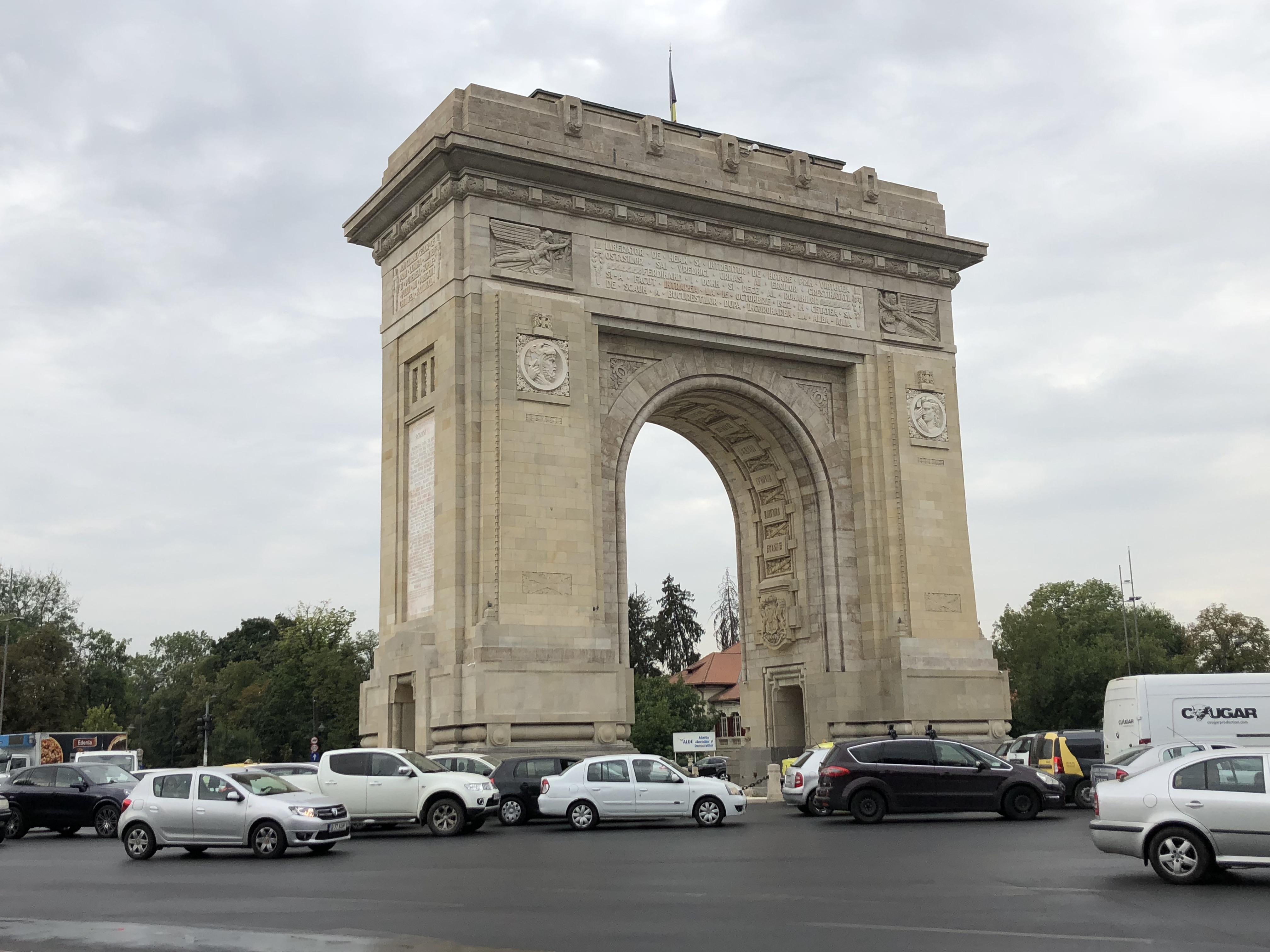
Arcul de Triomf, erected 1936
To solidify the French connection, a statue of Charles de Gaulle stands at the main entrance to the park.

So Bucharest has plenty of broad avenues, nice neighborhoods and parks from its Micul Paris past.
Urban Spaces: Crunch Time
That was then. Now, in the 21st century, parcels of land – even slivers – are at a premium.
Take a good look at the picture, below. It’s in a residential neighborhood that was once on the outskirts of the city and no longer is. It was precisely this construction that reminded me of the Perjovschi poster.
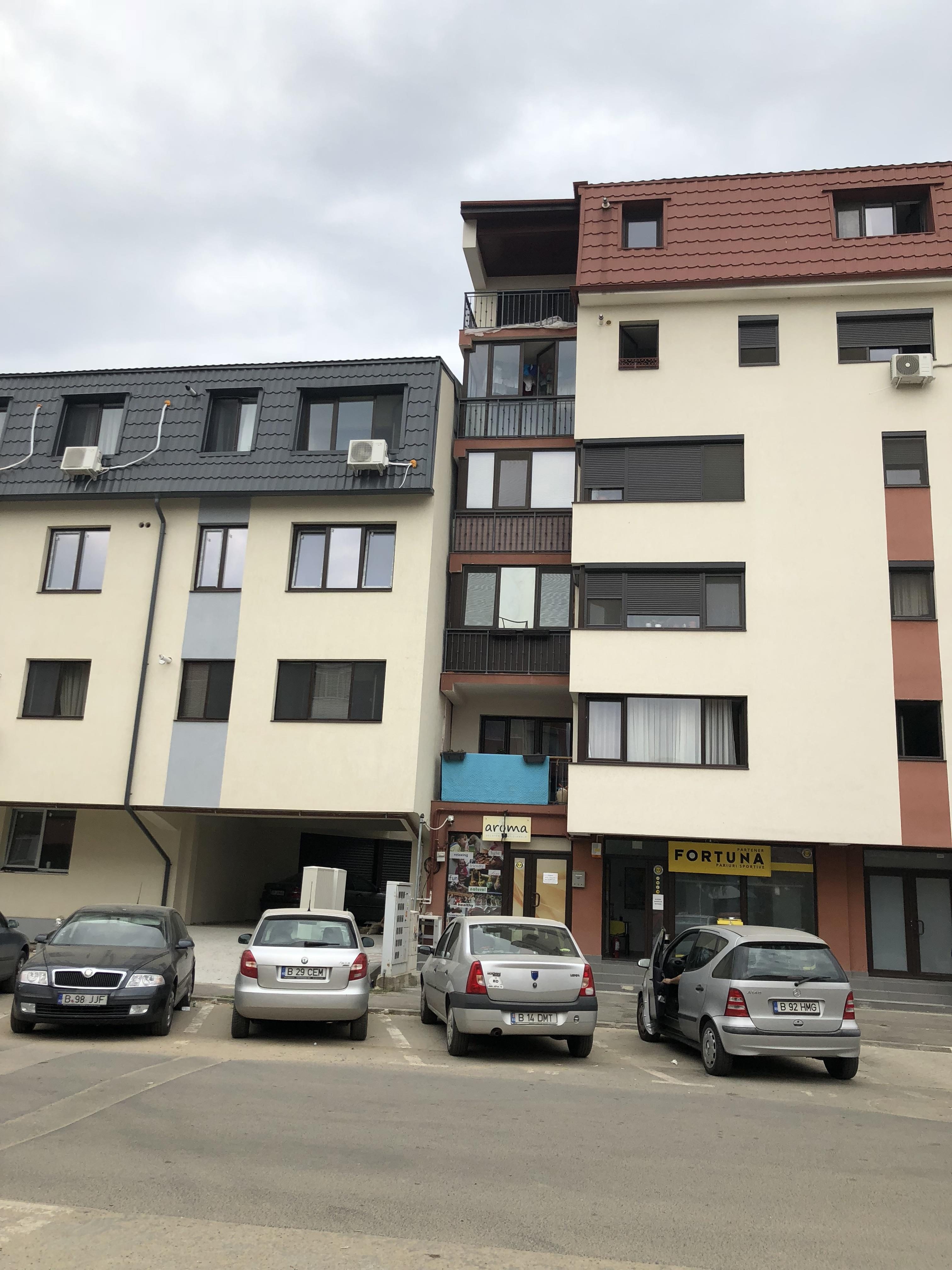
There are three buildings here, the middle one being only a few meters wide (with the AROMA sign). Apparently someone was able to buy the space between the two buildings on either side – the inverse of the church in the Perjovschi picture that likely predated the two buildings now crowding it.
I will have to find out what happened to the windows that must have been on the sides of the two original apartment buildings.
Urban Spaces: Other Trends
Decades of communism had harsh effects on the city’s architectural treasures. One by one the beautiful historic buildings, such as the Ateneu pictured above, have been spruced up.
However, when a building is too damaged to save completely, a postmodern approach is taken: keep what you can of the façade and fill in the rest with glass and steel.
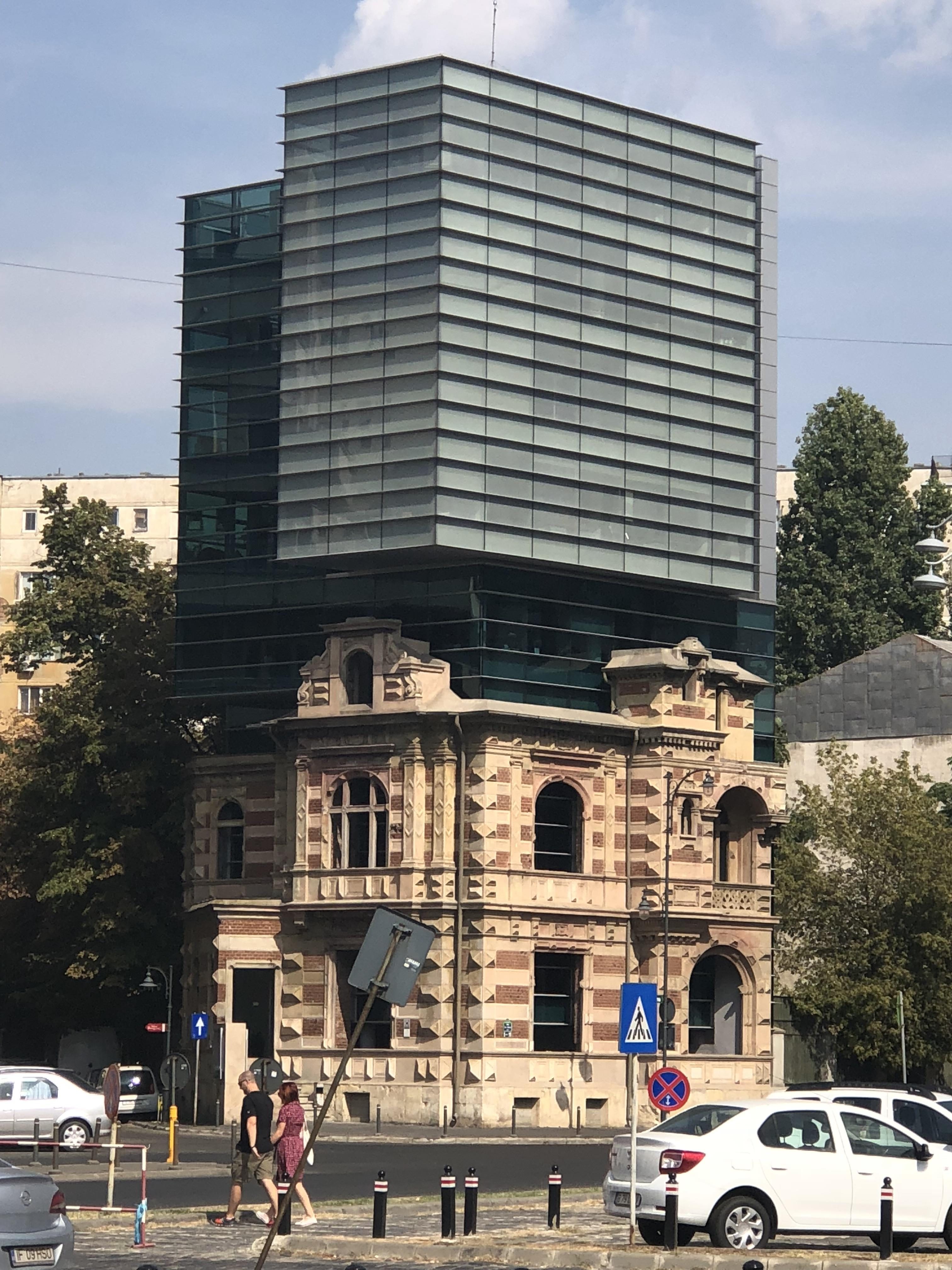
This building is exactly behind the King Carol 1 statue and library. I think it was also damaged in the Revolution. It now houses McKinsey and Company Romania consulting
Down Calea Victoriei is this Novotel:
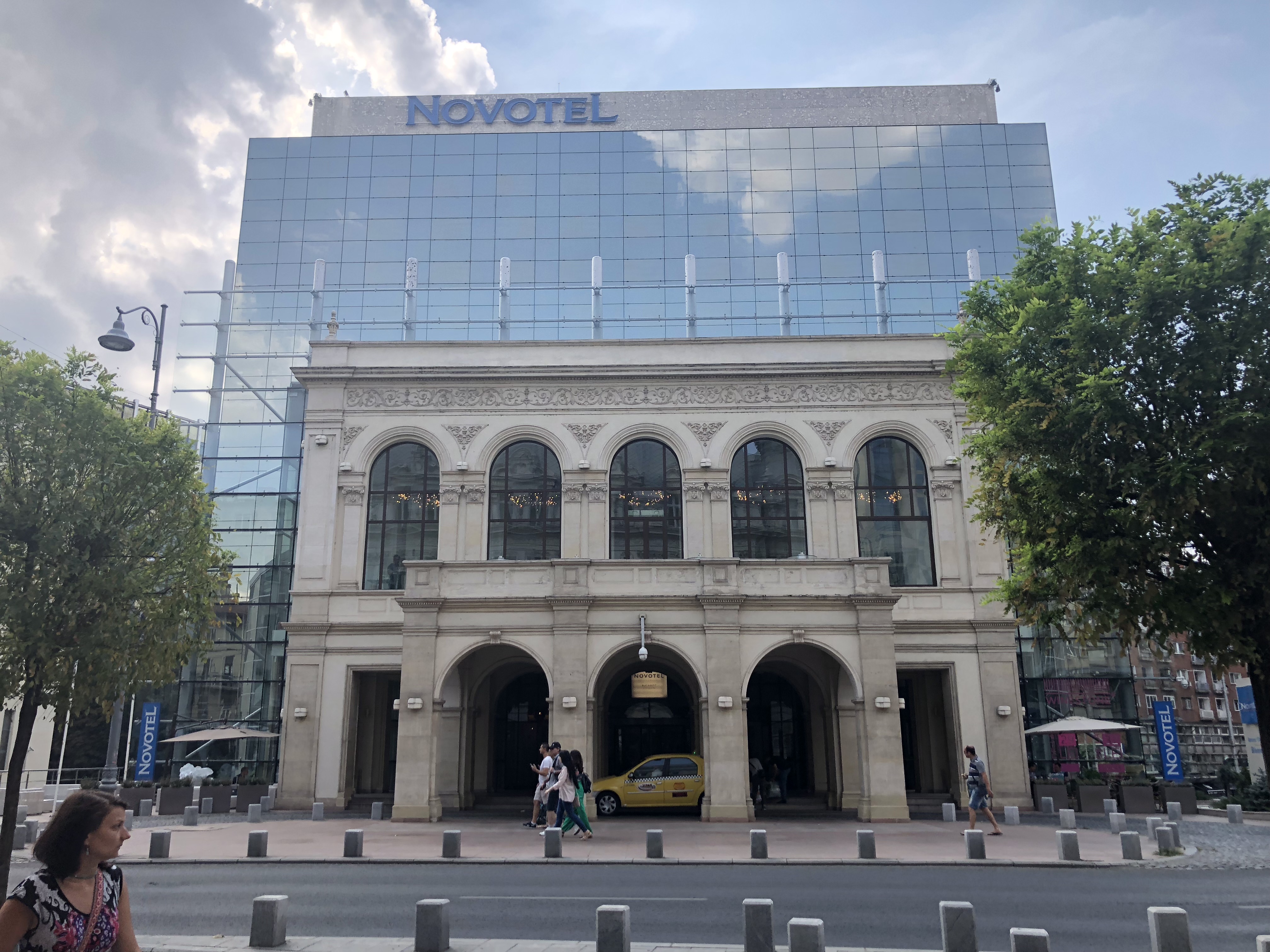
Not far from from downtown is Strada Dumbrava Roșie, a lovely street with beautiful old villas. This is a neighborhood I walk through on occasion, and over the past few summers I noticed this building, below, when it was intact. It looked to be a fantastic old residence long since abandoned. Now it’s a construction zone.

The insides were probably so dilapidated they had to be gutted. My guess is it’s going to be a bunch of upscale condos
Urban Spaces: Final Note
Back to zoning laws and churches.
On Saturday, when I was taking my pictures downtown, I walked a block off Calea Victoriei not far from the Ateneu to see what all the fuss was about.
The fuss is, namely, the lawsuit pursued by Saint Joseph Cathedral against the – get this – Cathedral Palace office building that was erected hardly ten feet to its left. Construction of the office building began in 2006, was halted on several occasions by lawsuits brought against it by the Catholic Archdiocese, and was completed in 2010.

Catedrala Sfântul Iosif with the office plaza looming large
I haven’t followed all the ins and outs of the case, but in 2013 the city ruled in favor of the Catholic Archdiocese that the office building should be torn down on the grounds that it was constructed illegally.
So, laws do exist to preserve spaces around historical monmuments.
However, there is now neither the expertise nor the money to demolish office building
And to this date, the building is empty.
See: All My Romania Blogs
Categorised in: Adventure, Europe, Romania
This post was written by Julie Tetel Andresen



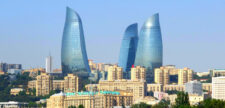
2 Comments